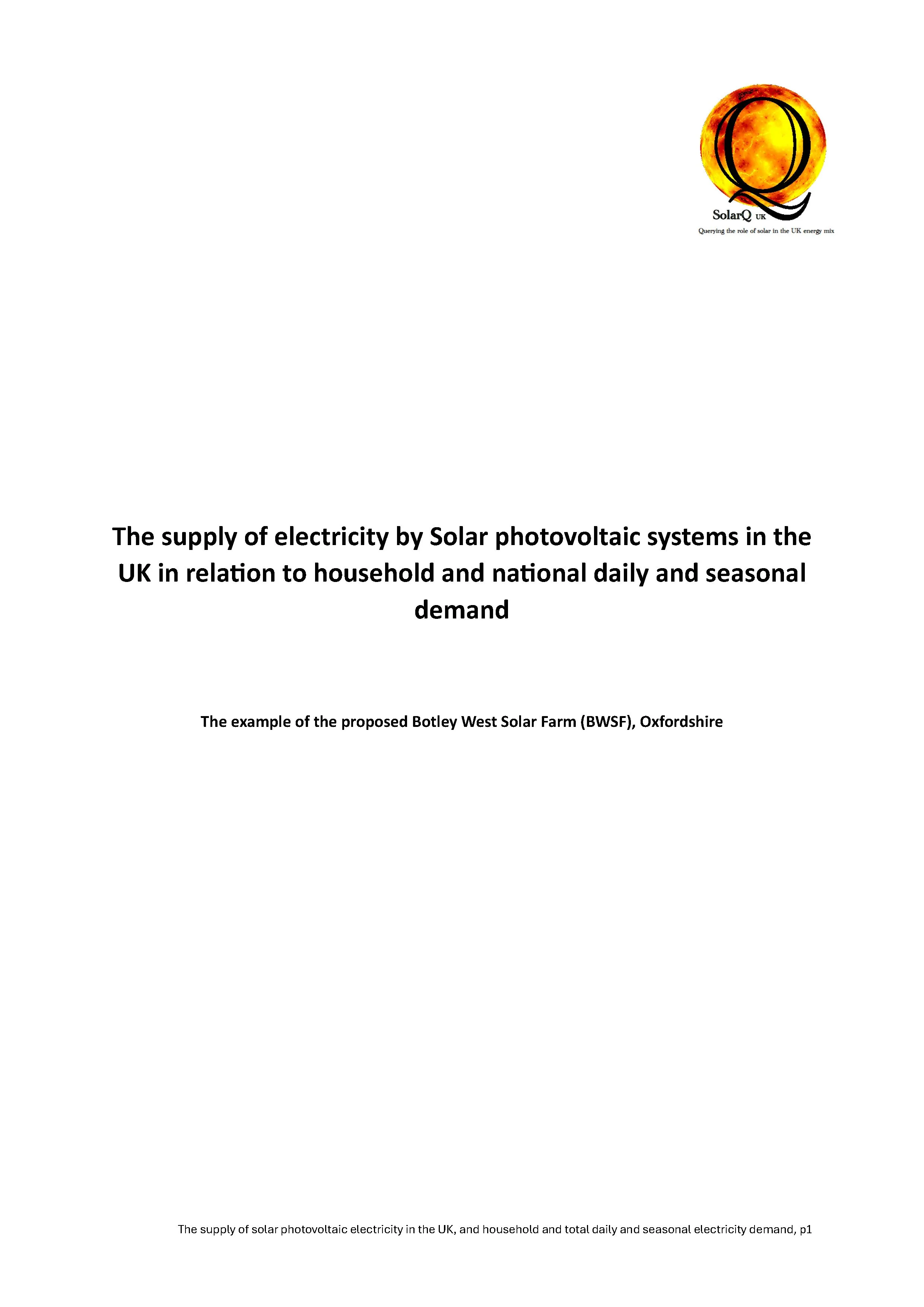Solar Electricity - Supply and Demand
All proposals for solar installations use an industry-standard method that produces misleading estimates of the number of UK households that might be entirely provided for by each installation’s output.
Solar electricity isn’t always produced when it is needed. Most domestic electricity consumption occurs from the early evening onwards when solar electricity production falls to zero. Time-of-year effects are even more important because solar photovoltaic output at the high latitudes of the UK falls dramatically during the Winter, when electricity demand is greatest.
SolarQ compared the Summer/Winter demand profiles of UK households with seasonal solar photovoltaic supply profiles using radar plots that capture the timing and amount of electricity supply and demand on an hourly basis. Botley West Solar Farm (BWSF) in Oxfordshire was used as the example case for calculating solar electricity supply, but the results can be scaled up or down for other installations.
Because of a mismatch in timing of supply and demand, BWSF (and all other solar installations) will only ever provide no more than 59% of the immediate electricity demand of the target number of households claimed by the developers, in June and July of each year. This figure falls to 24% in December. Throughout the average year, BWSF will provide about 44% of the immediate total household demand (the average of the 12 monthly figures) of its target household number. Over-supplies of electricity will have to be exported across the grid or stored elsewhere. Under-supply (night-time/Winter) must be met by other generating systems, currently gas-fired power stations.
The UK Government’s target for solar installations is 50GW by 2030, equivalent to 38.3 BWSFs. All the electricity produced by 50 BWSFs (total capacity 65.35GW) would be required somewhere in the country and would satisfy 33.8% of total Summer demand but only 6.2% of Winter demand.
The present analysis reveals something of which developers already must be aware. Time-of-day and time-of-year effects mean that neither a local solar installation nor, collectively, the national set of solar installations, can satisfy more than a fraction of the immediate local or national electricity demands.
As more renewable energy becomes available, developers and the National Grid need to pay much more attention to the problem of long-term (Summer/Winter) efficient, inexpensive energy storage. Batteries are unlikely to solve the seasonal mismatch of supply and demand that our research highlights. Click on the image (right) to read the full Report

